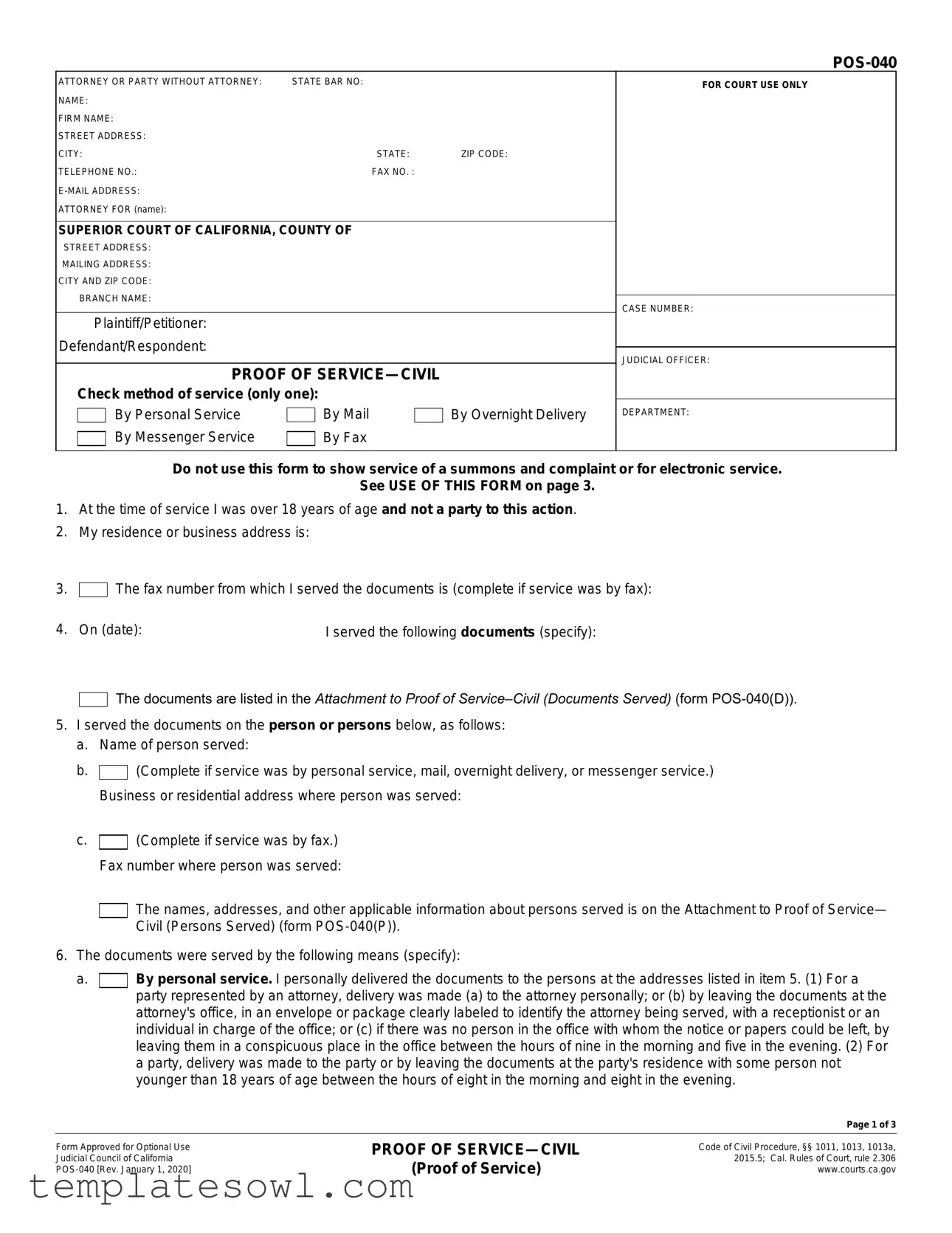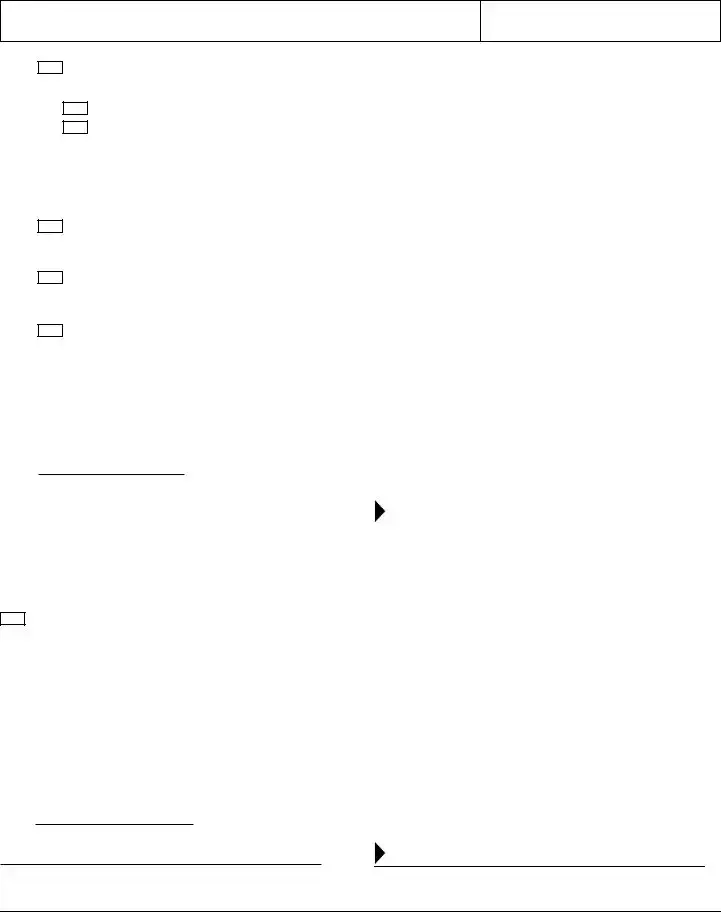POS-040
INFORMATION SHEET FOR PROOF OF SERVICE—CIVIL
(This information sheet is not part of the official proof of service form and does not need to be copied, served, or filed.)
USE OF THIS FORM
This form is designed to be used to show proof of service of documents by (1) personal service, (2) mail, (3) overnight delivery, (4) messenger service, or (5) fax.
This proof of service form should not be used to show proof of service of a summons and complaint. For that purpose, use Proof of Service of Summons (form POS-010).
Also, this proof of service form should not be used to show proof of electronic service. For that purpose, use Proof of Electronic Service (form POS-050).
Certain documents must be personally served. For example, an order to show cause and temporary restraining order generally must be served by personal delivery. You must determine whether a document must be personally delivered or can be served by mail or another method.
GENERAL INSTRUCTIONS
A person must be over 18 years of age to serve the documents. The person who served the documents must complete the Proof of Service. A party to the action cannot serve the documents.
The Proof of Service should be typed or printed. If you have Internet access, a fillable version of this proof of service form is available at www.courts.ca.gov/forms.htm.
Complete the top section of the proof of service form as follows:
First box, left side: In this box print the name, address, and telephone number of the person for whom you served the documents.
Second box, left side: Print the name of the county in which the legal action is filed and the court's address in this box. The address for the court should be the same as the address on the documents that you served.
Third box, left side: Print the names of the plaintiff/petitioner and defendant/respondent in this box. Use the same names as are on the documents that you served.
Fourth box, left side: Check the method of service that was used. You should check only one method of service and should show proof of only one method on the form. If you served a party by several methods, use a separate form to show each method of service.
First box, top of form, right side: Leave this box blank for the court’s use.
Second box, right side: Print the case number in this box. The case number should be the same as the case number on the documents that you served.
Third box, right side: State the judge and department assigned to the case, if known.
Complete items 1–6:
1.You are stating that you are over the age of 18.
2.Print your home or business address.
3.If service was by fax service, print the fax number from which service was made.
4.List each document that you served. If you need more space, check the box in item 4, complete the Attachment to Proof of Service—Civil (Documents Served) (form POS-040(D)), and attach it to form POS-040.
5.Provide the names, addresses, and other applicable information about the persons served. If more than one person was served, check the box on item 5, complete the Attachment to Proof of Service—Civil (Persons Served) (form POS-040(P)), and attach it to form POS-040.
6.Check the box before the method of service that was used, and provide any additional information that is required. The law may require that documents be served in a particular manner (such as by personal delivery) for certain purposes. Service by fax generally requires the prior agreement of the parties.
You must sign and date the proof of service form. By signing, you are stating under penalty of perjury that the information that you have provided on form POS-040 is true and correct.



